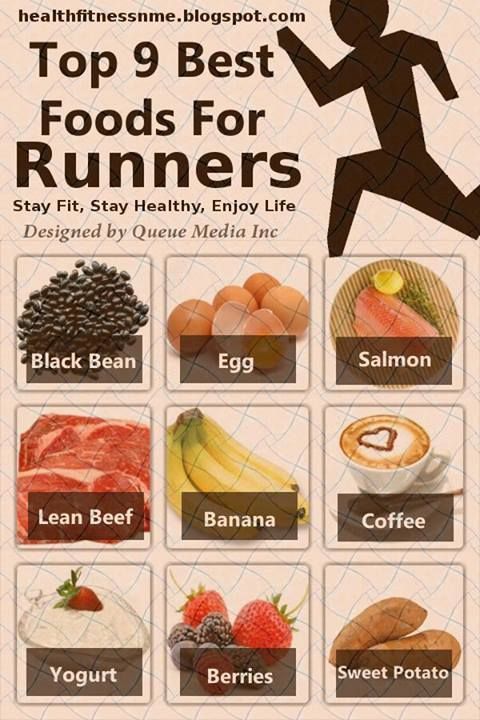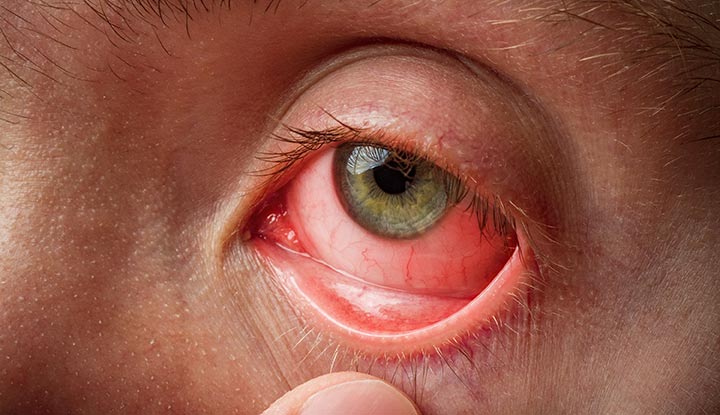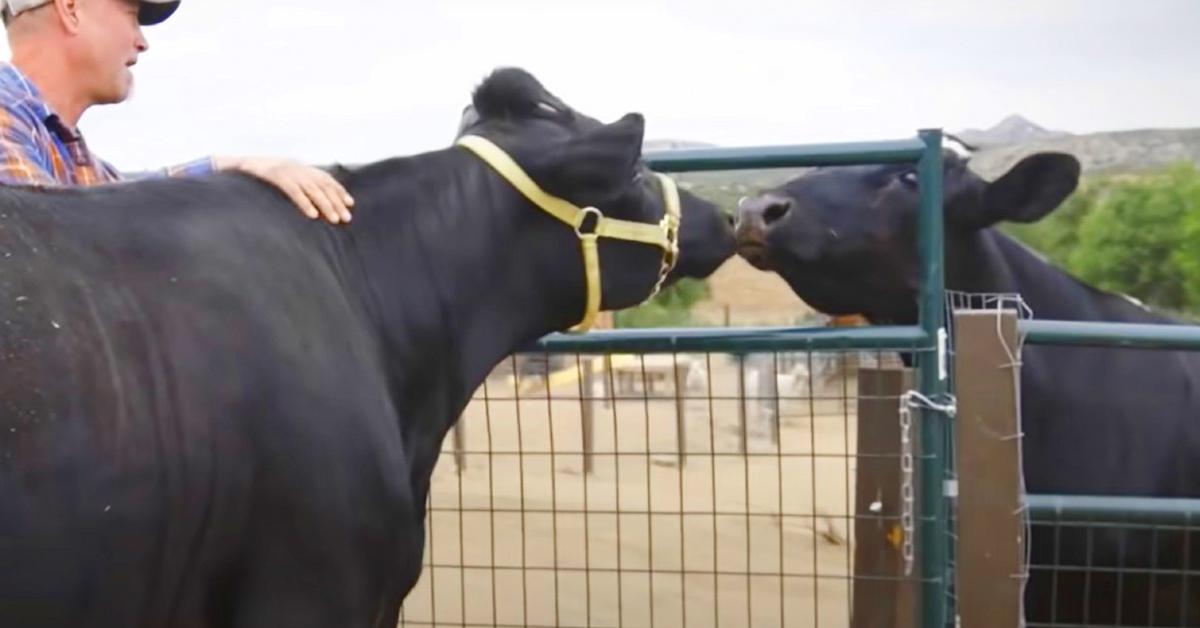

Foot and ankle pain is extremely common for runners. Learn common conditions that affect runners, treatment and prevention for foot pain, and more!
Why Does Running Cause Foot Pain?
There are several reasons that runners can have foot pain. Foot pain may stem from improper footwear, injury, bad technique, running very long distances, and over-rotation of the foot.
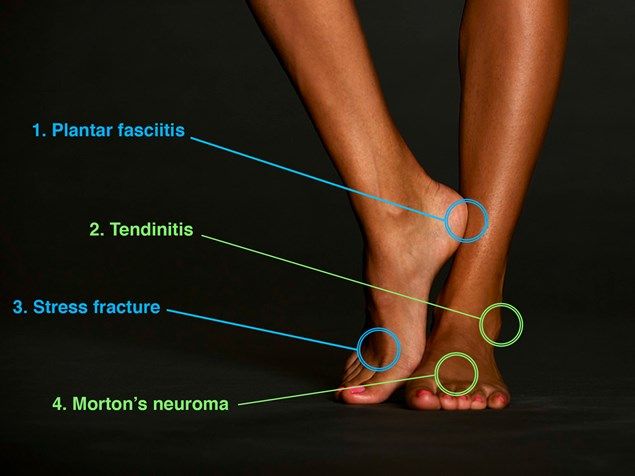
What are Some Common Foot Conditions That Affect Runners?
Plantar fasciitis
This condition occurs when the plantar fascia tendon, the tendon that connects the heel to the front of the foot, is damaged. This can happen from overuse when running, improper form, and excessive force. If you have plantar fasciitis, you may experience heel pain, tightness in the foot, pain in the arch, or stabbing pain at the bottom of the foot.
Bunions

A bunion is a bump next to the big toe that forms when the bones in the big toe is shifted. Wearing running shoes that are too tight or narrow may cause bunions. Additionally, wearing narrow shoes outside of running can cause bunions.
Achilles tendonitis
Achilles tendonitis occurs when the Achilles tendon is damaged. This tendon runs from the lower leg to the heel bone. This condition can happen to runners when they increase the intensity of their run too suddenly. If you have Achilles tendonitis, you may experience aching or stiffness in the back of the leg.
How is Foot Pain Treated?

If you are a runner and you are experiencing foot or ankle pain, seek help from a foot doctor near you. Our foot doctors will ask you about your symptoms and perform a physical examination to determine what is going on with your foot. From there, they may use imaging to confirm diagnosis.
Your foot and ankle doctor may recommend the following treatments for foot pain:
- RICE (rest, ice, compression, elevation)
- Activity modification
- Physical therapy
- Brace
- Anti-inflammatory medication
- Custom orthotics
- Surgery
Tips to Prevent Foot Pain
If you are a runner who is experiencing foot and ankle pain, here are some simple changes you can make to prevent foot pain:
- Change your running shoes
- Get custom orthotics
- Stretch before and after running
- Run for less distance or take longer breaks in between runs
- Ensure that you have proper form
Seek Help from a Foot Doctor Near You
If you are a runner that is experiencing foot pain, seek the help of a foot surgeon near you. Our foot and ankle doctors are located in Nashville, Franklin, and Brentwood, TN. They have experience treating ankle sprains, Achilles tendon injuries, Morton’s neuroma, stress fractures, metatarsalgia, plantar fasciitis, arthritis of the foot and ankle, sesamoiditis, and more!
To schedule an appointment with one of our orthopedic surgeons specializing in the foot and ankle, call us or request an appointment online.

4 most common foot injuries sustained by runners
Podiatrist Siobhan McCutcheon on the most common foot injuries runners suffer from and how to prevent them
Your feet take a pounding as a runner. Even with the most technologically advanced cushioned running shoe on the market, the repetitive nature of running, combined with the impact and force exerted on the feet, means that runners are, unfortunately, rather susceptible to foot injuries.
We caught up with Siobhan McCutcheon, podiatrist and clinical director of Market Street Clinic to find out the most common running-related foot injuries, and how you can prevent them…

4 most common foot injuries sustained by runners
Plantar fasciitis
The plantar fascia is a flat length ‘thick tissue at the sole of the foot that runs from your heel bone to your toes,’ explains McCutcheon.
‘Plantar fasciitis is a disorder in which the plantar fascia becomes inflamed and unpleasant, producing discomfort and soreness in the base of the heel or along the arch of the foot,’ she says.
Plantar fasciitis tends to be most significant in the morning, or after long hours of standing or walking. Some people may report stiffness and difficulties walking.
One of the best ways to get relief is by stretching and strengthening the plantar fascia itself, says McCutcheon.
- Sit with one leg crossed over the opposite knee.
- Use your hand to pull your toes back toward your shin until you feel a stretch along the bottom of your foot.
- Hold for 15-30 seconds and switch feet.
Read our our full guide to treating and preventing plantar fasciitis.
Ankle sprains
‘An ankle sprain generally develops when the foot bends or rotates beyond its normal range of motion, causing the ligaments to overstretch or rupture,’ says McCutcheon. ‘When you sprain your ankle, you’ve strained or torn the ligaments that keep your ankle bones together and offer support to your joints.’
Symptoms include: a swollen, bruised area on the outside ankle bone or a swollen area the size of a trainer sock, pain and tenderness in the ankle, difficulty putting weight on the affected foot, stiffness or limited range of motion in the ankle, instability or feeling like your ankle may give way.
Prevention exercises
To avoid ankle sprains, one of the best things you can do is to strengthen the muscles around the ankles and calves. Try these two exercises.
Ankle circles:
- Sit with your legs straight out in front of you and your feet off the ground.
- Rotate your ankle in a circle, moving your foot clockwise 10 times and then counterclockwise 10 times.
- Repeat with the other foot.
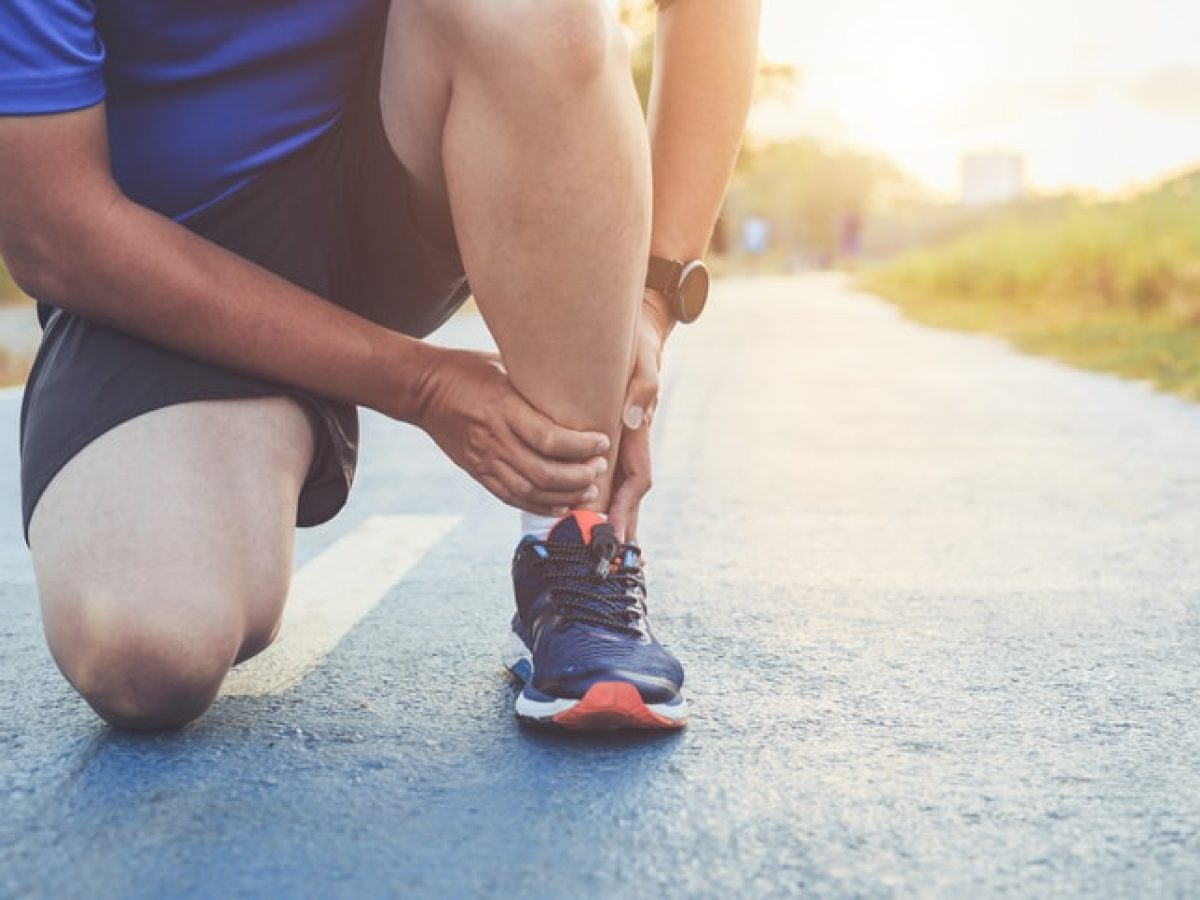
Resisted ankle flexion/extension:
- Sit on the ground with your legs straight out in front of you and wrap a resistance band around the ball of one foot.
- Pull the band toward your body, flexing your foot, then release and point your toes away from your body.
- Repeat for 10-15 repetitions, then switch to the other foot.
Read our full guide to treating and preventing ankle sprains.
Metatarsal stress injuries
‘The metatarsal bones are a collection of five long bones that link the ankle bones to the toes in the front of the foot and give the foot its arch,’ says McCutcheon. ‘Because they are situated on the ball of the foot, where the majority of the body’s weight is transferred during activities like walking and running, the metatarsal bones are especially prone to repeated pressure.’
Because they take much of the impact on foot strike, they can easily become strained, inflamed or fractured. ‘The symptoms of a metatarsal stress injury can vary depending on the severity of the injury,’ says McCutcheon, but a stress injury is usually evident by increasing pain on movement, ‘particularly during walking, running or jumping’. Other symptoms include: swelling of the metatarsals or tenderness to the touch, tingling or numbness (also felt in the toes) and red or bruised skin in the affected area.
The most common cause? Increasing running distance, frequency or speed too quickly.
Prevention exercises
Strengthening the glutes, quadriceps, calves, as well as improving your core stability, will aid prevention. You should also focus on strengthening the toe flexors, plantar fasica and peroneus muscles in the lower leg (the fibularis longus and fibularis brevis), which will help to protect the metatarsals.
Toe curls:
- Sit with your feet flat on the floor and a small towel under your toes.
- Use your toes to scrunch the towel towards you, then release.
- Repeat for 10-15 repetitions.
Arch lifts:
- Sit with your feet flat on the floor and lift your arches, keeping your toes and heels on the ground.
- Hold for 5-10 seconds, then release.
- Repeat for 10-15 repetitions.

Morton’s neuroma
‘Caused by a thickening of the tissue that surrounds the nerves leading to the toes, Morton’s neuroma is a painful ailment that commonly affects the ball of the foot between the third and fourth toes,’ says McCutcheon.
Described as feeling like your socks are bunching up or even that you have a small stone in your shoe, the specific cause of Morton’s neuroma is unknown, however, it is thought to be associated with high-impact activities that put pressure on the foot, as well as bunions or hammertoe, explains McCutcheon.
It affects women more frequently than men: ‘This is assumed to be due to women’s foot form and size, the types of shoes they wear and hormonal factors that may impact the structure and function of the foot. Women who wear high heels or tight-fitting shoes are more likely to acquire Morton’s neuroma.’
Prevention exercises
You can help to be prevent Morton’s neuroma by reducing the pressure on the arch of the foot – this can be done stretching the calf and achilles.
You should also strengthen the plantar fascia and other foot muscles to decrease stress in that area. Try these two exercises.
- Stand with your feet hip-width apart and raise up onto your tiptoes, then slowly lower back down.
- Repeat for 10-15 repetitions.
- For extra depth, try these on a box, or a stair.
Balance exercises:
- Stand on one foot with your eyes closed for 30 seconds, then switch to the other foot.
- Repeat for 2-3 sets.
- You can also try standing on a wobble board or cushion for added difficulty.
Ideal diet for runners

Ideal diet for runners
Maintaining a good diet is essential for runners, as are foods that give us enough energy to run. In addition, good nutrition allows runners recover energy, oxidation and muscular wearing during sports. However, there are many recommendations that do not have in mind the needs of each runner at all times. So Teyder, experts in orthopaedics and sports medicine, offers some guidelines that can vary each runner.

Recommended foods for runners
In fact, the diet of the runner follows the guidelines of the Mediterranean diet, which is applicable to all types of runners and helps to prevent injuries. Teyder recommends:
- Dried fruit (dates, walnuts, almonds) that strengthen the muscles of the runner to be rich in carbohydrates, protein, vitamins and minerals.
- Fruits and vegetables: Fruits and vegetables take two or three times a day helps prevent oxidative stress in the cells of our body, the antioxidants in these foods prevent excessive wear on our body, and we provide vitamins and minerals needed for run. It is important to ensure that foods are seasonal and that each serving of fruits and vegetables has different types of fruit and vegetables in order to eat 5 different fruits and 5 different vegetables.
- Banana is one of the most recommended fruits for runners because of potassium for muscle recovery and prevention of cramps. It also provides quick energy to replenish spent glycogen in the running.
- Omega-3 (oily fish, walnuts, flax…): helps to protect the heart of runner, a muscle that sometimes is put in limit, and control inflammation.
- Carbohydrates (algae, whole as pasta and rice) protect the intestinal mucosa of the runners to limit inflammation and immune reduction occurs when the sport is practiced at high intensity.
- Other foods: jelly and eggs (to protect the joints of the runner and mobility); sesame and cabbage (calcium); oily fish, legumes, nuts and seeds (phosphorus); pure cocoa (magnesium) and oats (silicon).
- Honey as a replacement for sweet: provides energy to run, potassium and phosphorus.

As we have seen in Teyder, oily fish is one of the most recommended to runner to protect joints and obtaining Omega-3, but oily fish is also very suitable to lose weight while still eating protein for muscles, to avoid runner inflammation and for the fluid retention. For this reason, it is recommended to eat at least 5 fish dishes a week.
Foods that runners should avoid
- Sausages
- Bread and biscuits
- Butter and cream
- Sauces
- Ice Cream
- Fried
- Sweets
- Alcohol
When and how should I eat?
For runners is very important to have a varied, complete and balanced diet, with breakfast, lunch, snacks (mid-morning and mid-afternoon) and dinner. Teyder advises:
- Breakfast: bread with tomato, olive oil and ham or cheese, yogurt, a fruit salad with some nuts, muesli…
- First snack: yogurt or fruit.
- Food: salads, vegetables, oily fish, meat (chicken or turkey), whole wheat pasta, rice, vegetables… It is important to combine different ingredients and vary each day to maintain a healthy, balanced diet.
- Second snack: nuts, fruit, bread with cheese, yogurt or muesli.
- Dinner: blue fish, vegetables, soup, yoghurt, salad, fruit salad… A light but promote optimal nutrient dinner break.
- Hydration
Hydration is a very important part of the diet, and more in sports. Therefore, runners should drink more water than usual because during running we become dehydrated more easily (1L per hour of running). When should I drink water? Before, during and after running, runners should take approximately 1L of water or a drink with sodium, thus the runners can prevent flatulence and dehydration.

Can I eat before running?
For the proper functioning of our body during running, it is important to eat carbohydrates easy to digest (wholegrain cereals, wholemeal bread, rice, banana …) between one or two hours before running. These foods provide us with glucose energy to run, but runners should not eat them too much because these foods can turn them into fat.Also the runner should avoid supplement this food with fat or sugar. If the runner decides to go running after eating, you have to wait about three hours and eat a snack after training.
What to eat after running?
- For runners, it highlights the importance of drinking water or some sports drinks and eating fruit.
- One serving of easily digestible protein to rebuild muscle fibers of the runners.
Teyder, experts in Orthopaedics and Sports Medicine for runners.
